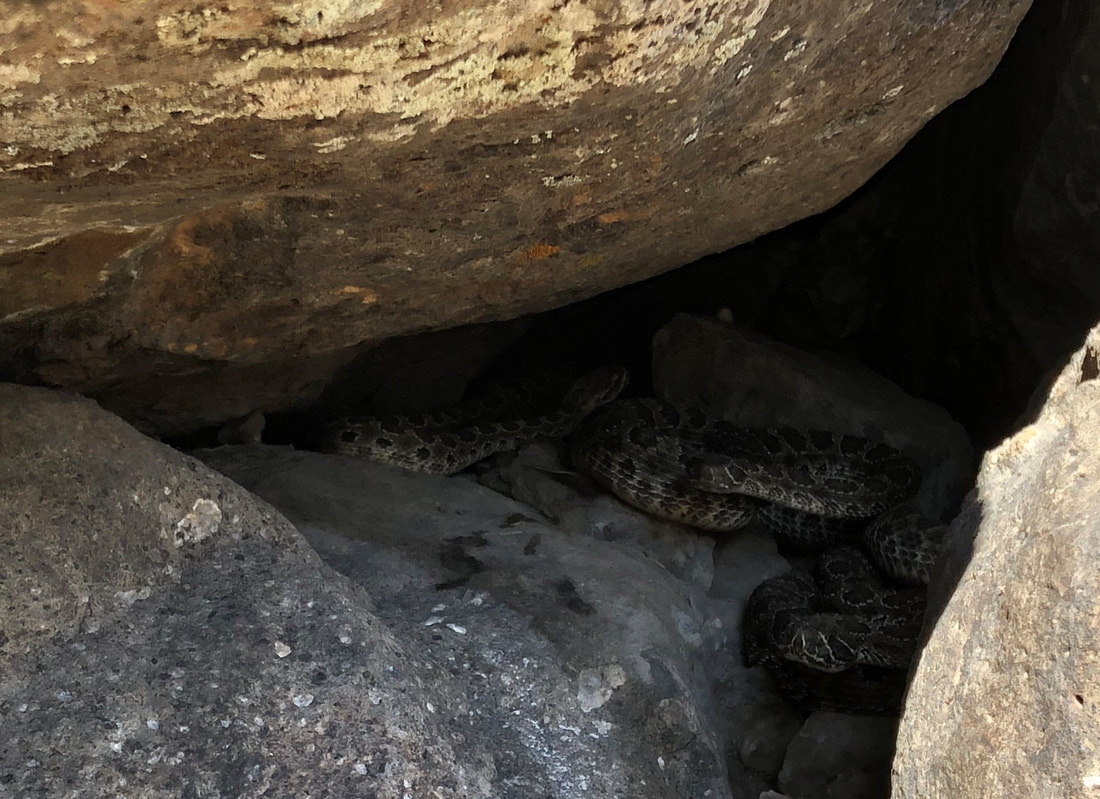|
Fall is here! Which means leaf colors changing, pumpkin-flavored everything, brisk mornings, cozy scarves and…..rattlesnakes. Yes that’s right, rattlesnakes, but only for a short time! So, what do rattlesnakes do in the winter? Animals that can’t produce their own body heat (like rattlesnakes, which are reptiles) need to find a location that can keep them safe during the freezing winter months. Rattlesnake activity will start to increase during the day as they move to find their last meal and go back to their overwintering dens. Last meals are taken 3-4 weeks before entering hibernation in order to be able to completely digest meals while it’s still warm before snakes get too cold and are unable to process food. This will go through the month of October and beginning of November. These dens are called hibernacula (hibernaculum for a single den) and are often in the form of underground cavities in rocky formations or old rodent burrows. These underground locations protect rattlesnakes from freezing and allow them to survive the winter. Prairie Rattlesnakes (Crotalus viridis) in a natural den. Another interesting fact about snakes and their hibernacula is that it isn’t uncommon for different species of snakes to use the same hibernaculum for winter. Bullsnakes, racers, garter snakes, and rattlesnakes can all be found in the same den coexisting peacefully (as the world should be) and then go their own ways once spring arrives. Despite the fact that racers are predators on small rattlesnakes and other snakes, there is a truce called during hibernation. Rattlesnakes will stay in their dens roughly from November to March; however, it isn’t unlikely to see them enjoying those warm winter days just like us! Download our rattlesnake safety guide!
AES volunteer, Craig, pointing at a natural den where Prairie Rattlesnakes were found.
2 Comments
|
Rattler TattlerAuthorsAdaptation Environmental Team: Bryon, Joe, and Kelly Categories
All
Archives
July 2023
|
||||||
|
Copyright © Adaptation Environmental Services L.L.C. circa 2012
|
Denver, Colorado
|



 RSS Feed
RSS Feed